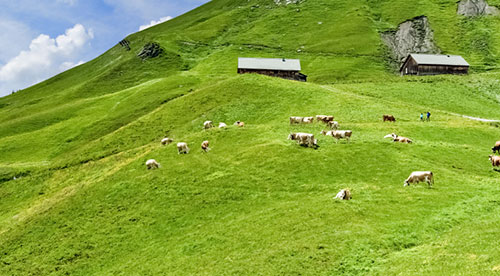
Last week I blogged about different management types that produce beef. One of the interesting facts was the large amount of water and resources used to produce beef on pasture versus a feedlot. However, there are some advantages to consuming grassland-raised products.
In the United States, more than two-thirds of the land where cattle graze cannot be used for any other purpose. Its topography is less than ideal. Steep and hilly terrain is not a great place for homes and rocky land isn't suited for growing crops. But, cattle are mobile and can walk to where grass can grow.
While this land most likely will need to be supplemented with additional feed, it is effective use of unused resources. Grass is not digestible by humans, but cattle thrive on it. Their four-part stomach can convert grass into meat and milk. Taking a nonhuman food and changing it into something humans can eat is an asset of ruminants.
Additionally, to prevent land from being overgrazed, ranchers move cattle from field to field (paddock to paddock). This aids in faster regrowth and keeps the soil from washing away in heavy rains. In addition, the manure they produce acts as a fertilizer.
That's why cattle are excellent recyclers of by-products. For the most part, these leftovers are high in protein, inexpensive and are a complement to rations. Depending on the part of the country, citrus pulp, cottonseed, brewers grain, whey and wheat mill run are found in feedbunks. Many more exist, but can often be seasonal, making a consistent supply challenging. But, feeding these wasted materials in rations is being environmentally conscious.
Making use of the underutilized forages or consuming the leftovers from the processing of human food and drink, cattle are making their conversions a win-win-win-win for all: Cost effective human food for the consumer, multiple sources of income for the food processor, quality nutrition for the animals, and wasted food and by-products avoid landfills.
So, when those unfamiliar with food production question why some animal care practices are implemented, think about the ways cattle and people benefit each other and not how they compete against each other.

The author is the online media manager and is responsible for the website, webinars and social media. A graduate of Modesto Junior College and Fresno State, she was raised on a California dairy and frequently blogs on youth programs and consumer issues.








